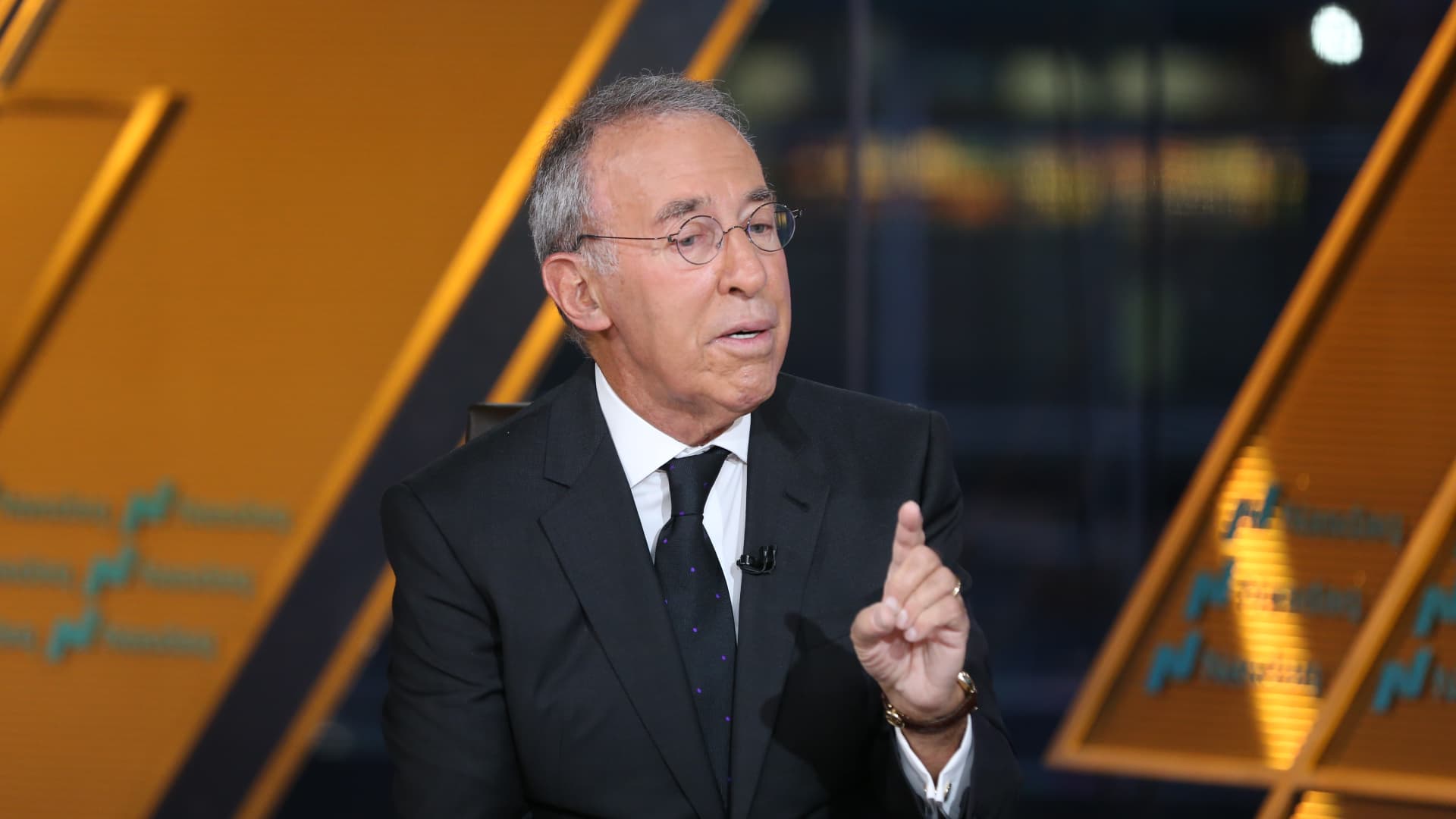The dollar has fallen over 8% this year. How much further could it go?

Investment banks are warning of a potential structural decline in the U.S. dollar , citing risks ranging from dramatic shifts in U.S. trade policy to the potential unwinding of massive foreign investments in American assets. The dominant view among major institutions leans toward sustained dollar weakness. Deutsche Bank last week forecast a “structural dollar downtrend,” while Barclays noted the dollar index ‘s decline over the year to date — it’s currently down 8.3% — and suggested the weakness is “likely to remain.” .DXY 1Y line While the depreciation of the dollar has been largely attributed to President Donald Trump’s trade tariff policy, others also point to the president’s attacks on the U.S. central bank and its chair as eroding confidence in the currency. Schroders, a British fund manager with more than $1 trillion in assets, described the measures as a “de-facto rejection of the U.S. dollar-centric global monetary regime.” “By proposing heavy tariffs based on the size of deficits (not actual trade barriers) Trump is making it clear that the U.S. wants not free trade but balanced trade,” said Jim Luke, a commodities portfolio manager at Schroders. Meanwhile, Goldman Sachs — which was bullish on dollar strength until April 2 — said that tariffs raised to levels not seen in more than 100 years “will lead to less exceptional outcomes for U.S. assets.” “We flipped our Dollar view a few weeks ago, based in large part on tariffs and other U.S. policy shifts raising uncertainty and impairing sentiment in the U.S. and likely weighing on U.S. firms’ profits and U.S. households’ real income,” said Kamakshya Trivedi, head of global foreign exchange at Goldman Sachs. How much further could the dollar devalue? Concerns are amplified by the roughly $18 trillion of foreign capital invested in U.S. equities, a record share according to Goldman Sachs, and $7 trillion in bonds, according to Deutsche Bank. There are early signs investors may be reducing this exposure, according to the Wall Street bank. Goldman has estimated that European investors have been behind the “bulk” of recent sell-offs after analyzing Treasury and fund flow data. Investors from other regions, including China, Canada, the U.K. and Japan, have mostly bought U.S. equities over the past two months, the bank added. As the dollar declines, investors are likely to consider hedging their currency exposure, which could further exacerbate the devaluation. Bank of America found foreign investors often leave vast U.S. equity holdings unhedged — potentially $6.5 trillion for Europeans — and argued recent dollar weakness creates an “imminent need to hedge,” which involves further selling of U.S. dollars. The bank’s FX strategist, Athanasios Vamvakidis, previously expected the U.S. dollar to fall to 1.15 dollars per euro (from around 1.14% currently). However, Vamvakidis told CNBC’s “Squawk Box Europe” last week that the bank now expects the dollar to depreciate 3.5% further to hit 1.19 dollars per euro by the end of the year. BofA also sees a scenario where the dollar could weaken against the British pound to reach 1.50 dollars per British sterling (from 1.33) — levels not seen since before Brexit in 2016. Over the medium term, Deutsche Bank currency strategists believe the greenback could be valued at 1.30 dollars per euro over the next five years, ending the era of an expensive dollar. “Our view on all these factors is that the pre-conditions are now in place for the beginning of a major dollar downtrend,” said George Saravelos, head of FX research at the German investment bank. EUR= 1Y line Meanwhile, Goldman Sachs suggested shorting the Australian dollar and buying Japanese Yen as an effective hedge against declining dollar assets. They noted that while historically a long yen and short dollar position typically profits during a recession, the trade is unlikely to be as effective when the Federal Reserve’s independence is being questioned and a global tariff war is in play. “Even after a swift move in recent weeks, we believe that the Dollar has further to fall,” said the Wall Street bank’s strategists in a note to clients on April 25. “We expect European currencies to continue to be the main beneficiary of this backdrop on a structural basis, while Yen longs provide the best hedge if next week’s employment report shows clear signs of a labor market slowdown and raises risks of deeper and earlier Fed cuts.” Goldman expects the yen to strengthen from 143 yen to the dollar currently, to 135 yen to the dollar over the next 12 months and continue to strengthen to 115 yen to the dollar by 2028. JPY= 1Y line The bullish view However, not all analysts expect an immediate continuation of the decline. London-based consultancy Capital Economics highlighted that the dollar’s recent fall occurred despite interest rate differentials moving in its favor – a highly unusual divergence possibly reflecting a “risk premium” linked to erratic policymaking and market dislocations, similar to the U.K.’s 2022 bond market turmoil. Capital’s Markets Economist Shivaan Tandon expects the dollar “will recover some lost ground over the coming months” as rate differentials reassert themselves. Tandon suggests that tariff-induced inflation will keep the Federal Reserve from cutting interest rates soon, supporting the dollar relative to other currencies. While acknowledging unconventional policies may cause “longer-lasting damage to confidence,” Capital Economics says a “lack of credible alternatives” means the dollar is likely to remain central to the global financial system and the world’s major reserve currency for some time.









